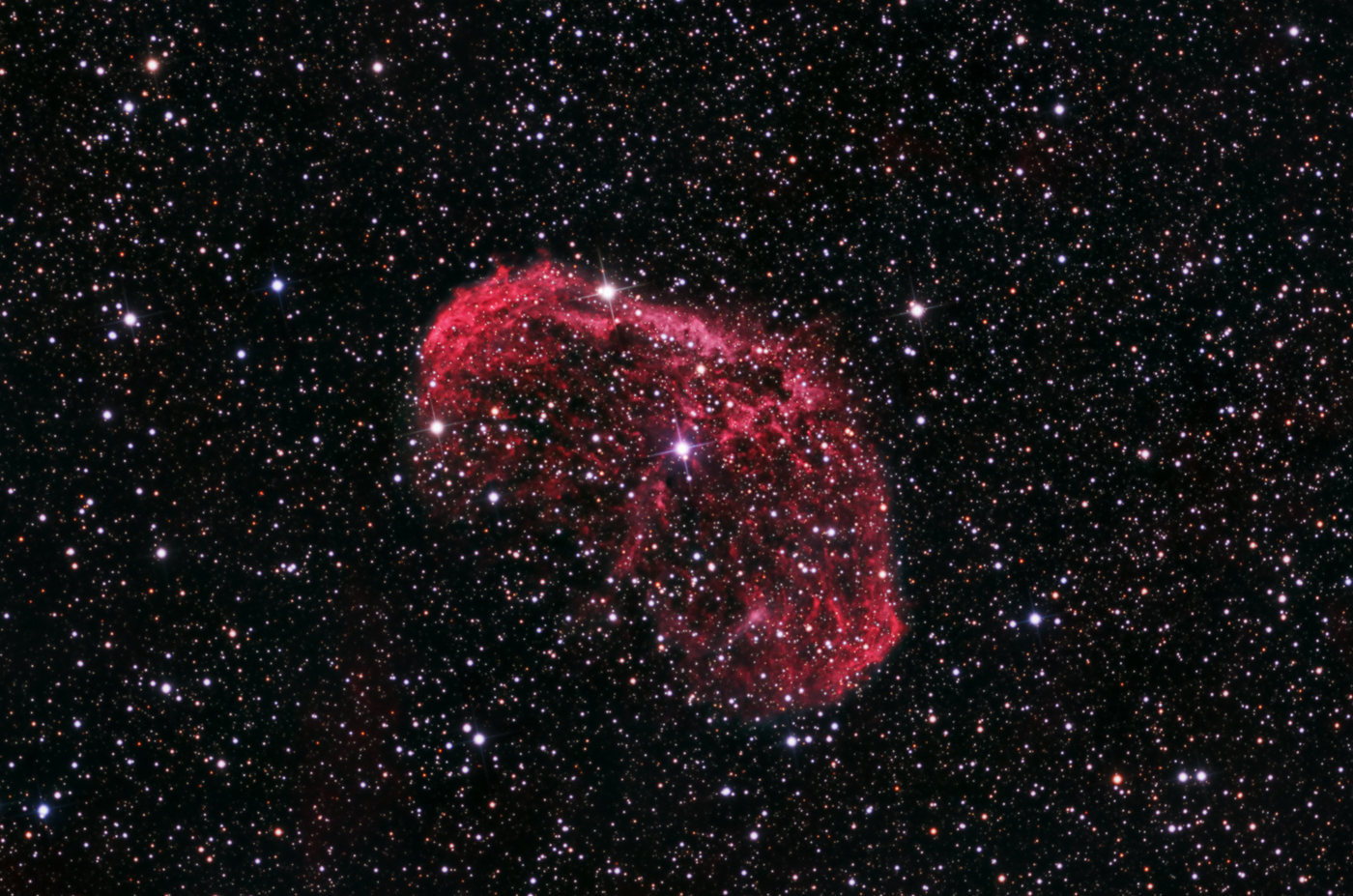 |
NGC 6888, "The Crescent Nebula"
Emission Nebula in the Constellation Cygnus
 |
The Crescent Nebula (also known as NGC 6888, Caldwell 27, Sharpless 105) is an emission nebula in the constellation Cygnus, about 5000 light years away. The Crescent Nebula measures approximately 30 light-years across from end to end and 10 light-years wide. It was discovered by Friedrich Wilhelm Herschel in 1792. It is formed by the fast stellar wind from the Wolf-Rayet star WR 136 (HD 192163) colliding with and energizing the slower moving wind ejected by the star in an earlier phase when it became a red giant around 250,000 to 400,000 years ago. The result of the collision is a shell and two shock waves, one moving outward and one moving inward. Both shock waves combined are about 25 light years across. The inward moving shock wave heats the stellar wind to X-ray-emitting temperatures.
The star is shedding and ejecting the equivalent of the Sun's mass every 10,000 years. The nebula's complex structures are likely the result of this strong wind interacting with material ejected . Burning fuel at a prodigious rate and near the end of its stellar life this star should ultimately go out with a bang in a spectacular supernova explosion.
The Crescent Nebula is a rather faint object located about 2 degrees SW of the star Sadr. For most telescopes it requires a UHC or OIII filter to see. Under favorable circumstances a telescope as small as 8cm (with filter) can see its nebulosity. Larger telescopes (20cm or more) reveal the crescent.
(Text credits: Wikipedia and NASA).
For a larger, higher-resolution version of the same image, go to this link.
Image
Details:
Total Effective Exposure Time: 16.5 hours
Wade
Van Arsdale
Little Rock, AR., USA
December 19th, 2013